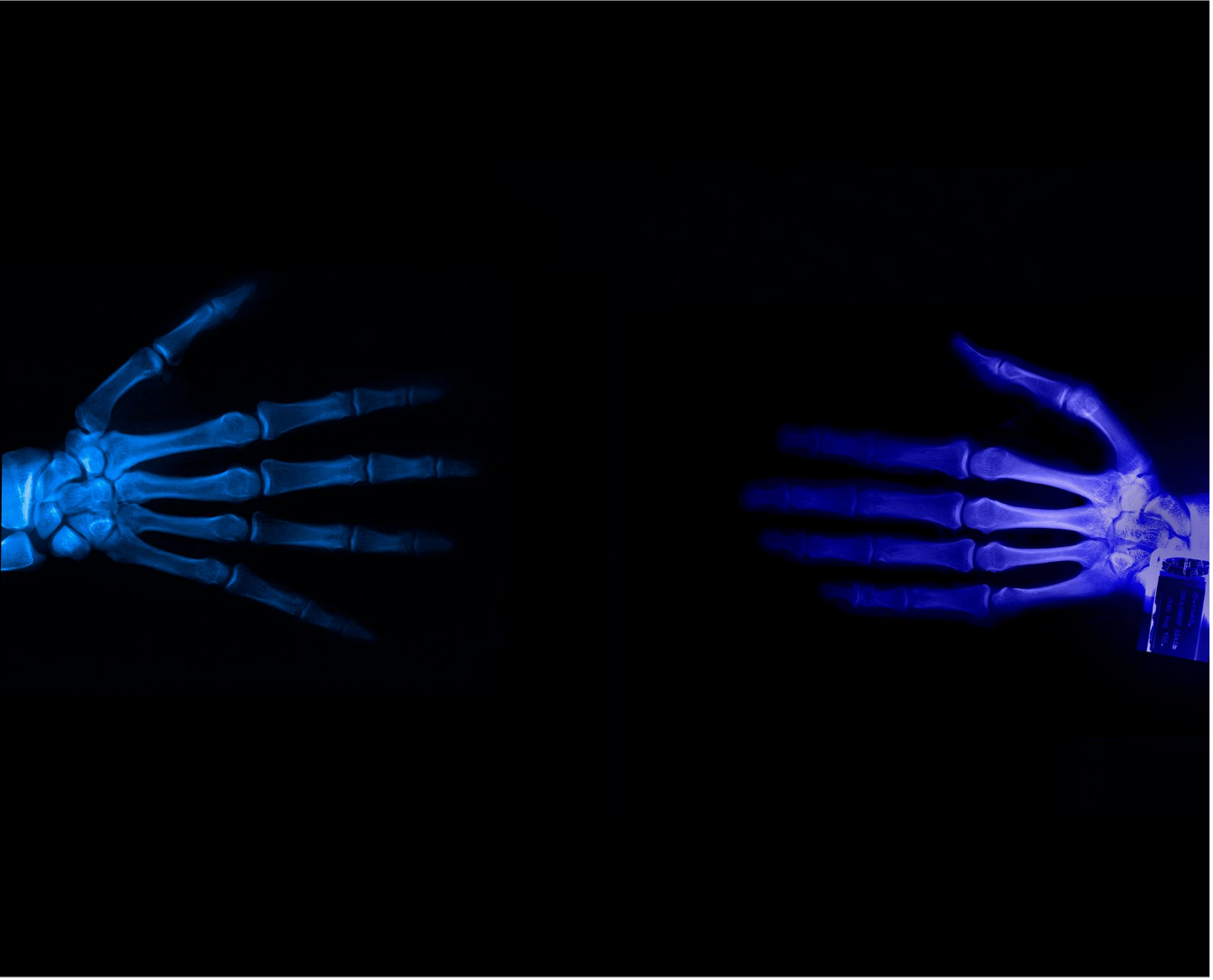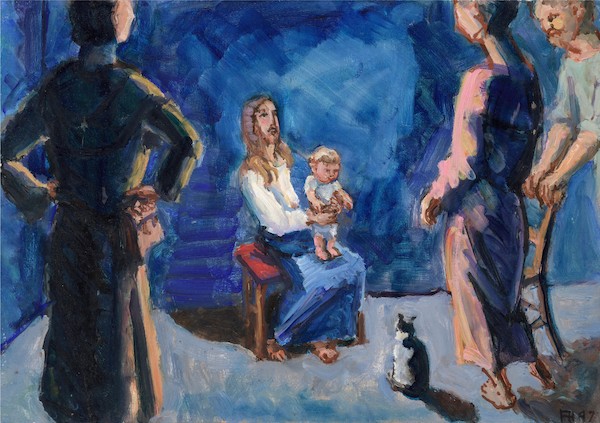When the Reformation broke through in our [Dutch] corner of Europe, our towns boasted a number of large churches built in a simple Gothic style. Inside, of course, they were adorned with statues and paintings, but the overall effect was not nearly as opulent and decorated as the French and German churches. The latter had been built during the same period, but in a style much more boisterous – the so-called flamboyant Gothic style. In the Netherlands the only place you can really see an example of this latter style is in Den Bosch.
With the Reformation these churches fell to Calvinist congregations. Those congregations were then faced with the problem of how to make those huge spaces suitable for a Protestant worship service, which places quite different demands on a church interior. Of course the images and paintings and altars – anything reminiscent of Catholic liturgy – were removed. But the problem remained: how do you make such a building suitable for a preaching service? So they built huge pulpits in the naves of the churches, and gathered the pews around them in a large square, with the pews set on a gradual incline so that all could see the preacher. In many places (Leiden’s Pieterskerk; Amsterdam’s Oude Kerk; in Gouda, Alkmaar, etc.) these old pews can still be found.
The result was a high, spacious and fairly simple building, a space without any striking adornments. The churches were all whitewashed, although there is some debate as to whether that practice began during that time, or whether it had been done before as well. It is surprising that the buildings did not become stark and bare but took on a character of their own, with a unique beauty to be found in that multi-coloured whiteness – yes, multi-coloured, because of the many nuances of white and grey that resulted from the play of light through the stained glass windows, and because the white did not always stay white, and because of the memorial plaques and the coats of arms (in connection with the tombs) hanging here and there on the pillars.
Thus, without exaggeration we can speak about Dutch seventeenth-century church interiors in connection with these churches. (We are not talking about the newly built churches such as the one in Amsterdam built by Hendrik de Keyzer.) Also the organs that were usually installed against the west wall contributed to the unique character of these churches.
It is a truly wonderful experience to wander around in these buildings. One cannot get enough of their picturesque beauty. The interplay of the heavy pillars, the large bright windows, the way the light falls on those pillars and on the greyish floor, with an occasional accent supplied by the dark diamond-shaped plaques, the sepulchral monuments, the splendour of the choir stall and the organ. Yes, one really needs to wander around for a while to allow the constantly changing perspectives, views, corners, and shifting plays of light to have their full effect. It is a unique kind of beauty, to be found nowhere else in the world.
We used the word ‘picturesque’ just now. We use that word, but it may be that we use it only because a number of painters have opened our eyes to the poetry and the beauty found here – painters who sing their songs through the medium of paint, songs about these white, but far from sterile, delights. Among those artists, there are two who deserve special mention: Pieter Saenredam and Emanuel de Witte, the greatest church-painters not just of our own seventeenth century, but of all time.
Pieter Saenredam (1597–1665) painted the Dutch churches painstakingly and with great precision, without neglecting a single detail. But he did not lose sight of their coherency, and no one has comprehended the beauty and uniqueness of these churches as well as he did. So he offered us, in these church interiors, art that is of unsurpassed excellence – paintings of small nooks and crannies of the buildings in which now this, then that delights us as we nose around. Perhaps the most striking aspect of Saenredam’s art is his feeling for colour. He transforms the apparently monotonous onochrome interiors into a rich and fascinating colour-play, in such a way that we come to see and discover its beauty along with the artist. He does not just fantasize, but he raises his paintbrush in song to this arvellous facet of God’s creation.
With his intense feeling for nuances, for slight variations of hue, he pulls us into the church buildings along with him, to have us join him in appreciating their splendour. You should really try some time to get a chance to see the marvellous little painting that shows us one view inside the St Laurenskerk of Alkmaar. Here we find a great simplicity, but what variations of colour, what lyricism, what quiet loveliness! Such a work could only be produced by a master artist. This corner of the church was not just a random choice, but it was selected with great care, to permit the creation of an outstanding composition; that one small corner, with its compelling interplay of perspectives, pulls together all the elements that make this church so unique. The whitewashed walls alone are rendered with an unsurpassed artistic excellence.
The art of Emanuel de Witte (1617–1692), a member of the next generation, is also based on careful precision and accuracy, with the emphasis (even more so than with Saenredam) on the effects of light. But de Witte takes much more liberty with his subjects. One church interior, for example, looks like the church in Delft, but the pulpit resembles one from the Oude Kerk in Amsterdam. And when we compare this piece with another one, we notice that at first glance the two paintings seem to depict the same church but, upon closer examination, we notice a host of subtle differences.
Those differences are not just accidental. Emanuel de Witte composed his painting with great precision, and the distinguishing characteristic of his work is the interplay of light and shadow, which occurs because of variances in lighting. Paintings can be inspired by the same church building, but the one can show it with the light coming in from the right, the other with the light coming in from exactly the opposite side. The one depicts the church in midday, when the sun stands high in the sky; the other depicts it in the late afternoon or early morning. But the really amazing thing is the distribution of light and dark areas, the way the composition is based on this interplay of light and shadow. And that is why these two paintings can look so completely different in their details. For example, the sounding board above the pulpit in the one is fastened to the side of a pillar (thus preventing interference with the bright white patch), while in the other that same object runs around the entire pillar, so that it will cast a shadow in just the right spot. The painting would lose much of its beauty if that sounding board had not been positioned exactly in that spot. It is remarkable; Emanuel de Witte has created two paintings of an almost identical church scene, but has managed to produce two entirely different works.
We hope that this has been helpful, not only for gaining a better understanding of the work of two of our great artists, but also perhaps for learning to see a little more clearly the beauty hidden in some of our old churches – hidden, but always perceptible for those willing to take a look, at any time of day, in any kind of weather. These are treasures that can never be stolen or taken away; they are there for all to see.
***
Originally published in Dutch in Calvinistisch Jongelingsblad 14, 1959.
Published in English in M. Hengelaar-Rookmaaker (ed.): H.R. Rookmaaker: The Complete Works 4, Piquant – Carlisle, 2003.
%20(1).png)












